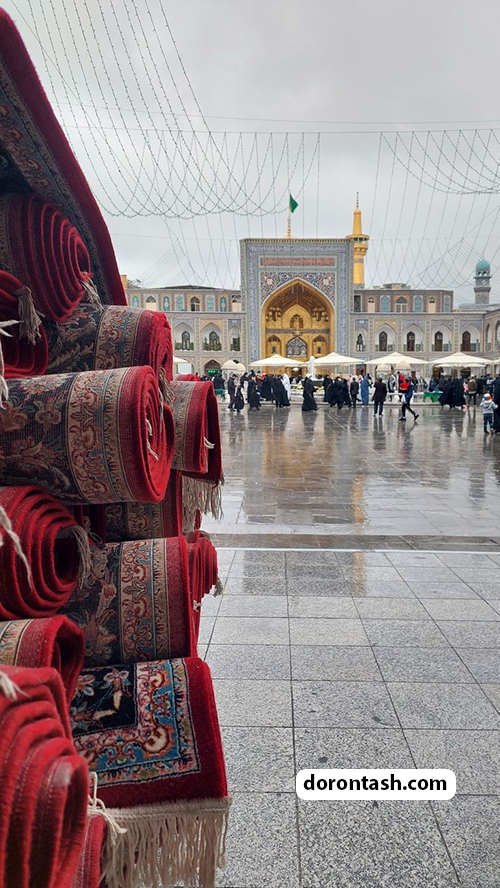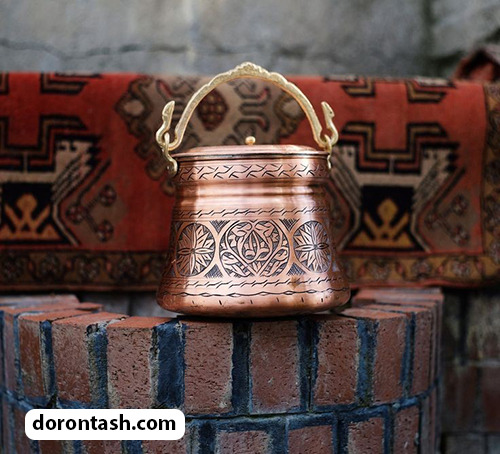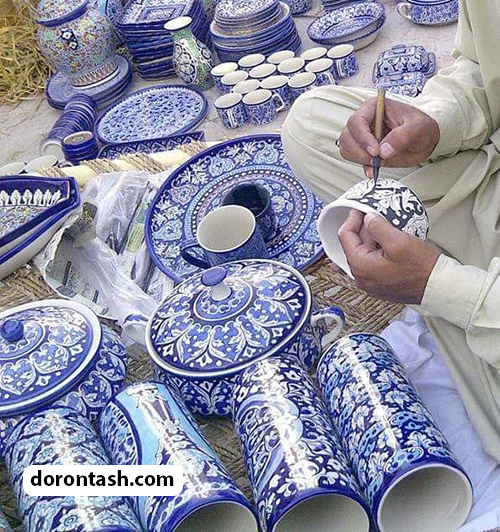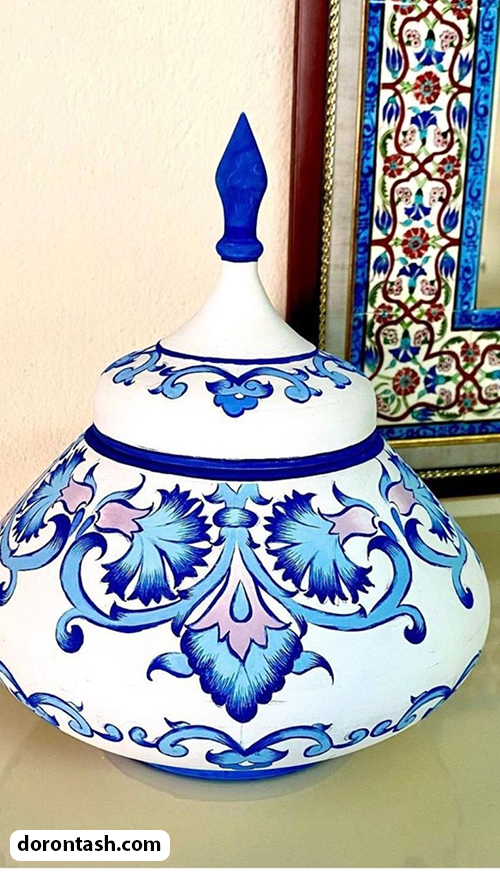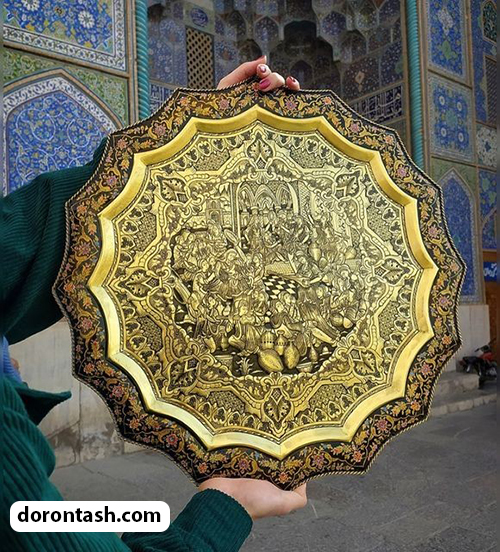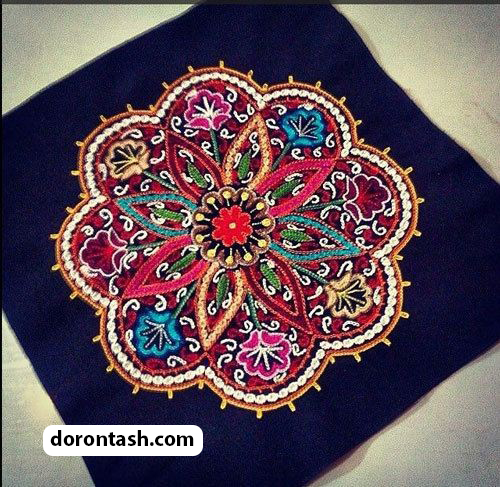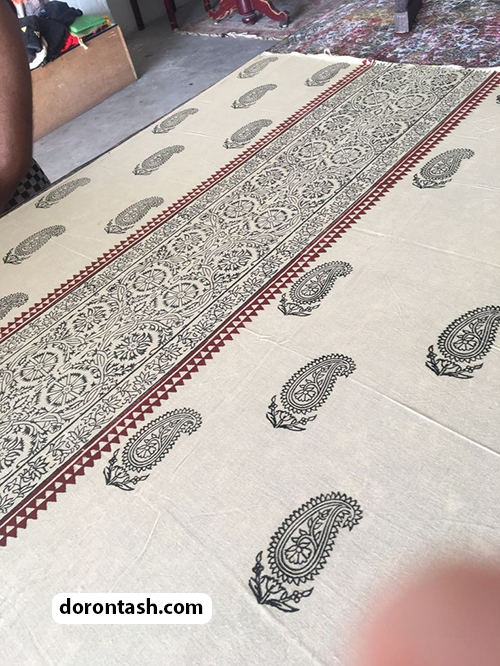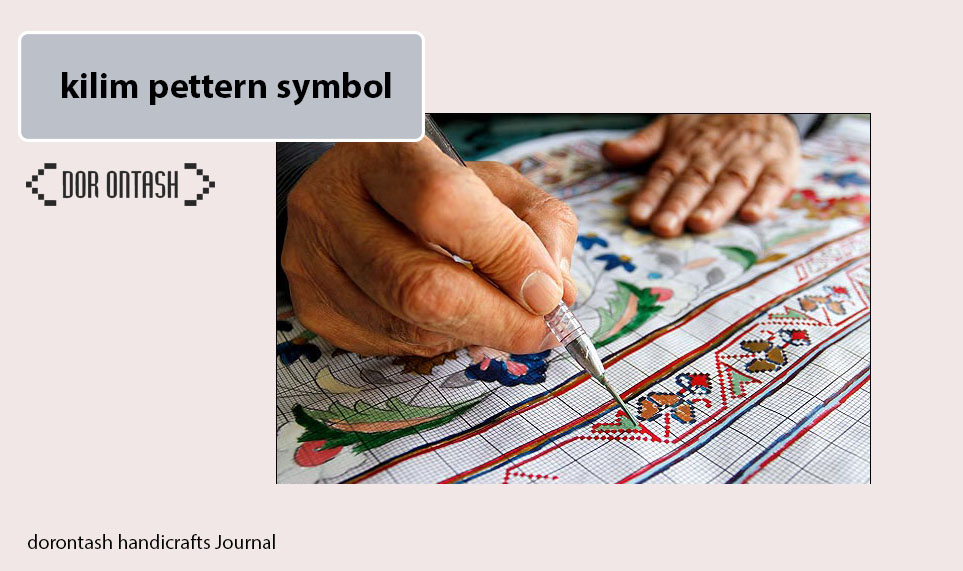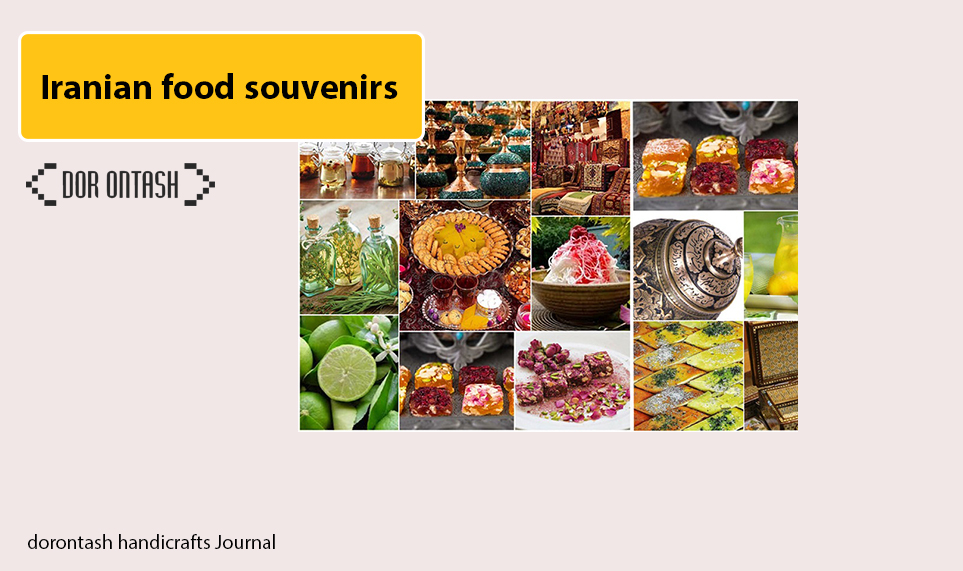Today I will talk to you about The most beautiful handicrafts of Iran. I will tell you the capacities and potentials of Iran’s handicrafts in several sections. Iranian handicrafts are considered our most valuable works of art and are a manifestation of the culture of our peoples.
The meaning of handicrafts
Handicraft literally means the combination of art and human hand. Although there are common industries in some cities, the handicrafts of each region of Iran are unique. In the fabric of each work, we can see signs of the rooted culture of a city or village. Iran’s handicrafts are considered as one of the three poles of handicrafts in the world.
The identity of any country can be found layer by layer in the culture and history of that ancient civilization, and this identity tells a part of an ancient story of the connections between the art and civilization of the people of that region. It is considered one of the founders of cultural and historical civilization among all the countries of the world. This manifestation of Iranian civilization can be seen in the art left by Iranian ancestors in historical works such as tombs, mosques, palaces and many others of this category. of the works found, but in these historical works, works of art play the main role.
Works of art , by being used in various structures of society, have played their role in conveying their mission, as a part of Iran’s cultural identity by creating different local and national layers in cultural works from the past to the present.
But among the works of art despite the existence of different cultures throughout Iran, we see different works, one of the most luxurious of these works of art is the art of handicrafts, which brings a manifestation of ethnic and national culture to the fore.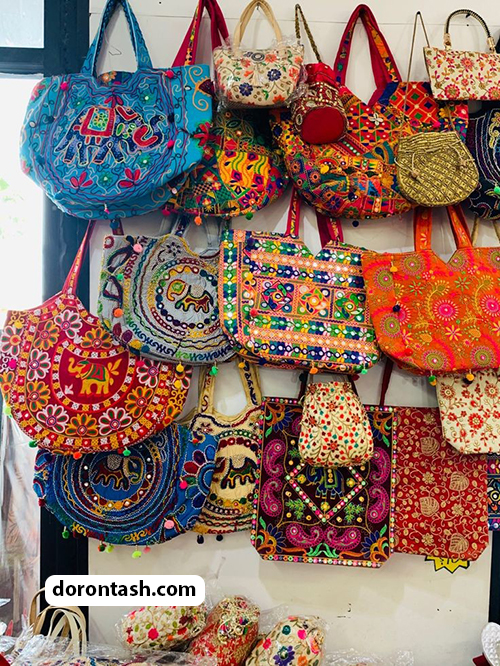
Features of handicrafts
- Carrying out part of the basic production steps by hand, tools and hand tools.
- The effective and creative presence of man in the production and shaping of the designed art, and the possibility of creating diversity and implementing different designs in the stage of making various artistic products.
- Creation or productivity of local raw materials
- Applying cultural principles and creating native and national cultural images
- Affordable compared to other products
- The ability to create platforms for production expansion in similar local areas
- The ability to transfer the production process through the family or the cultural transfer principles of that region, such as apprentice and master

Handwoven carpets The most beautiful handicrafts of Iran
Hand-woven carpets and rugs are a symbol that has been a symbol of Iran and Iranians since ancient times, and this popularity has been accepted internationally by accepting Iranian carpets as the most beautiful and highest quality in this field of handicrafts.
Iranian hand-woven carpets with a unique design and relying on the tradition of decorative and sometimes ethnic and national designs reached the peak of their prosperity in the 17th century, and this is the reason why Iranian hand-woven carpets such as Galim, Zilo, rugs and carpets are still present today. among the most popular handicraft works in the world.
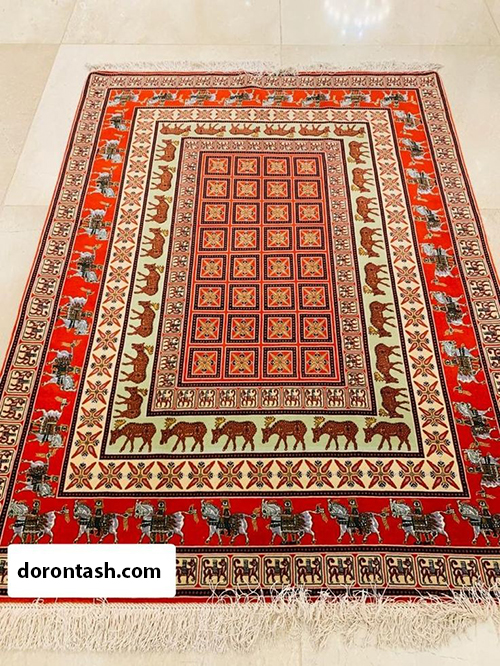 Weaving and textile handicrafts and creation of the most beautiful handicrafts of Iran
Weaving and textile handicrafts and creation of the most beautiful handicrafts of Iran
Weaving and traditional weaving are among the oldest iran handicrafts. This industry was formed in order to meet the human need for clothing and some daily items and was divided into different branches. Today, traditional weaving and textile industry can be considered as one of the most diverse handicrafts in Iran. In different provinces of our country, the weaving of various types of carpets and rugs and different types of traditional textiles are popular, which are among the most famous handicrafts of these regions. Some of the sub-branches of this industry are: gabe weaving, jajim weaving, silk weaving, night tent weaving, velvet weaving, curtain weaving, khos weaving, bar weaving, shamad weaving and chafieh weaving.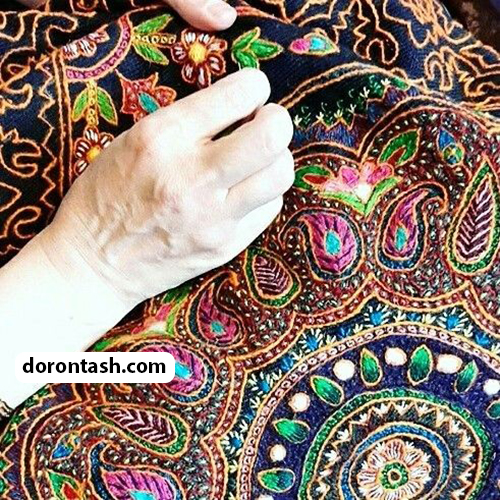
A kilim bag is one of the most beautiful handicrafts of Iran
Rug bags have a high value due to the fact that their body is made with hand-woven rugs and are relatively new handicrafts. pesrian kilim bags is sewn in different regions and each region uses its own carpet. In the dorontash collection, woven rugs are part of their area, which are woven according to a specified design.
Copper and glass dishes are among the most beautiful handicrafts of Iran
Among the oldest technologies of Iranians, we can mention the technology of producing copper and glass containers and shaping them in the past centuries with a special design.
Not only in Iran but also in the world, glass making is one of the most basic and advanced technology made by mankind, Iranians were among the pioneers of this science, and the works of this glass on a global scale have also been registered in the name of Iranians.
But the heyday of this industry, after many ups and downs, can be explored in the Seljuk period.
 Traditional embroidery is one of the most beautiful handicrafts of Iran
Traditional embroidery is one of the most beautiful handicrafts of Iran
The art of embroidery was formed due to human interest in decorating clothes and various items such as tablecloths and all kinds of rugs. The art of embroidery is one of the common handicrafts in different parts of Iran and it is done in different cities with various tools. The most famous branches of embroidery include needlework, tapestry, patchwork and crochet.
Among the other sub-sets of hand embroidery, we can mention cream embroidery, chashme embroidery, star embroidery, glabton embroidery, black embroidery, and velvet embroidery.

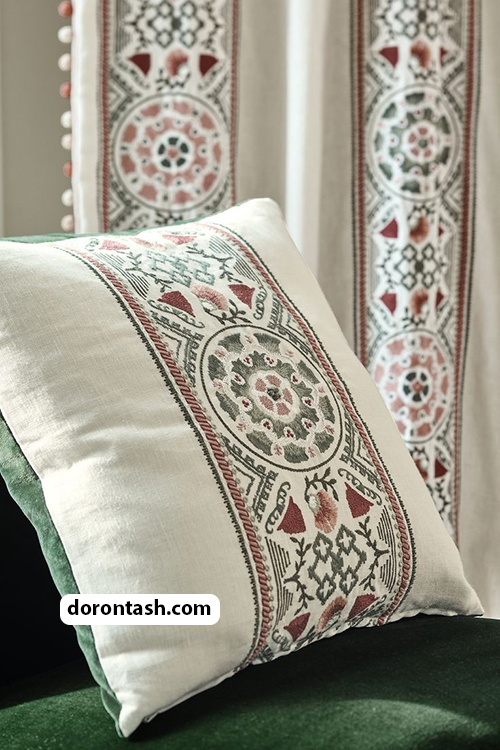
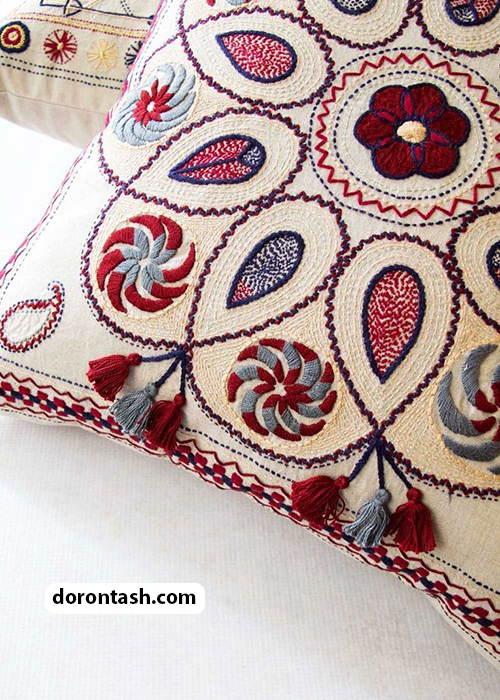
Metal handicrafts are one of the oldest, most expensive and most beautiful handicrafts in Iran
The discovery of metal in the ancient times drew people’s attention to this first material for the manufacture of daily necessities, and its use to prepare all kinds of utensils and everyday tools became common due to the high strength of this material. Among the works left from ancient Iran, there are many examples of all kinds of metal tools. For this reason, the age of metal crafts can be attributed to ancient Iran.
Among the most famous branches of metal handicrafts, we can mention the arts of engraving, engraving, pen making, goldsmithing, goldsmithing, silversmithing, coppersmithing, casting, jewelry making, weapon making, and sign making.
 Ceramics and pottery are the most expensive and beautiful handicrafts of Iran
Ceramics and pottery are the most expensive and beautiful handicrafts of Iran
Pottery and ceramics are among the oldest design arts in Iran, and their use in various historical and cultural monuments, as well as the role of this industry in making decorative and practical tools, has made this industry popular all over the world, and Iran has a significant share in this market. is assigned to itself.
This science with an age of 10,000 years is one of the potentially ancient advanced industries, and the oldest of these pottery workshops in the world is located in Shush.
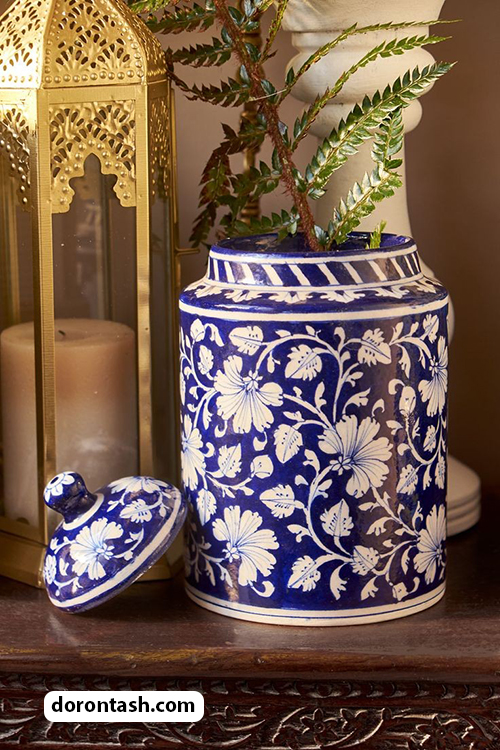 Enameling is the most expensive and beautiful handicraft of Iran
Enameling is the most expensive and beautiful handicraft of Iran
Minakari, which is also called Minagri and Minasazi, is one of the original Iranian arts that has a history of about 5 thousand years. This art, which is one of the most famous and popular handicrafts in Iran, is mostly done on copper; But it can also be done on gold, silver and pottery.
Gold and silver are among the metals that do not oxidize when combined with enamel, for this reason, designs with great detail and similarity can be executed on it, while copper dishes do not have this capability.
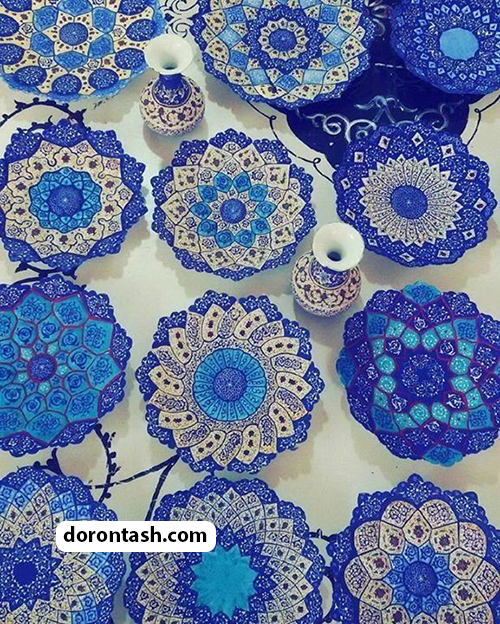
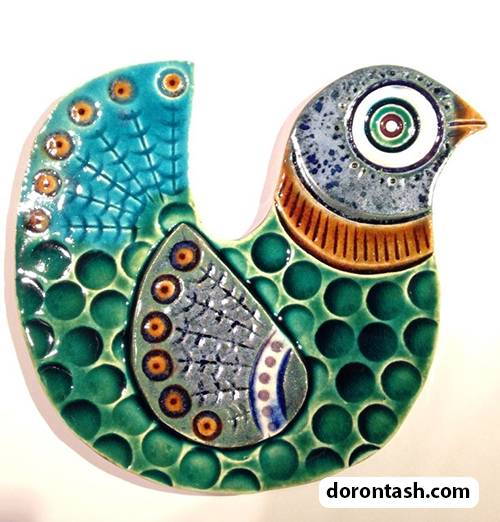
Miniature painting is the most special, expensive and beautiful handicrafts of Iran
Miniature is an art in which the artist creates small-scale works with unique colors, precious materials such as gold and silver, and specialized painting techniques. This type of painting has countless details and in the old days it was drawn on ivory and animal bones, but today it is drawn on different scales and on various objects such as cardboard, paper, glass, wood, etc.
The art of miniature painting is one of the most popular Iranian handicrafts in the West, which is highly admired by art and civilization enthusiasts, and is known as an expensive Iranian and oriental painting.
Khatam Kari is one of the most expensive and beautiful handicrafts in Iran
Khatamkari is one of the most popular handicrafts in Iran that has a long history. There were different narratives among the artists of this field about the first inventor of inlaid dishes; But none of these narrations correctly specify the time of making the first seal.
In this art, various raw materials are used, including all kinds of bones (elephant bone and ivory, horse bone and camel bone), metal wires including brass, silver, aluminum, and oyster in different colors to form beautiful polygons. The set of polygons is delicately cut and finally placed together to cover the surface of the desired object with a seal.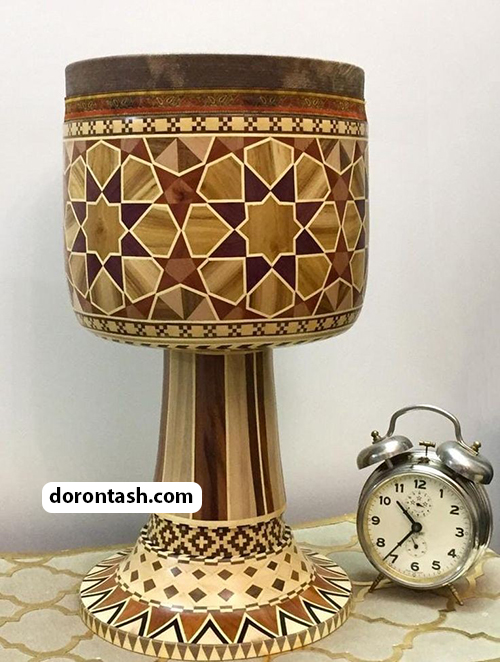
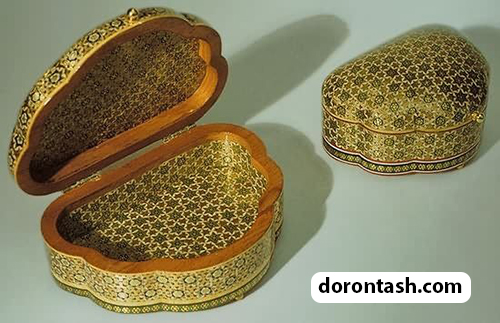
Kobe turquoise can be the most expensive and beautiful handicrafts of Iran
Turquoise is a valuable, rare and extremely beautiful stone, which is considered to be the origin of the city of Neyshabur in Iran. The art of Turquoise Kobi is also called putting together very small pieces of this precious stone on metals such as copper and brass, which are glued together with a special varnish.
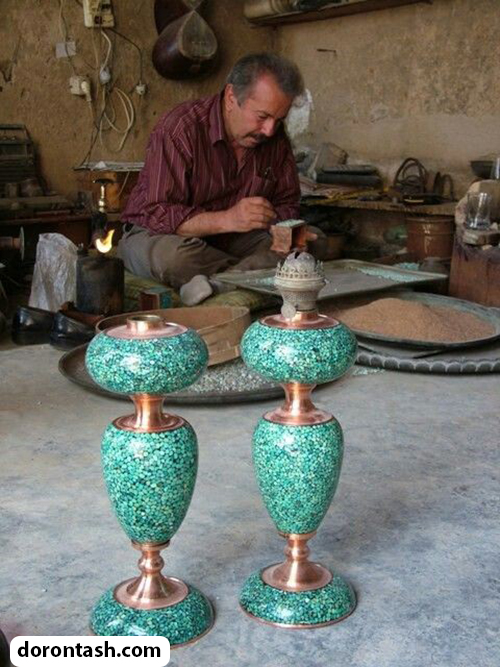
Ancient ornaments, the most expensive and beautiful handicrafts of Iran
Expensive and of course very elegant and beautiful alloys have long been one of the favorite industries of Iranians and other countries.
In Iran, the western and southern cities, having different alloys of different materials such as gold, silver, turquoise, etc., began to produce and create all kinds of ornaments with diverse designs and styles and the style of their native culture and art.
These ornaments and the way of designing and shaping these precious metals were noticed by different neighboring countries and other levels of the world, and in the past centuries it became a luxury and popular handicraft, and today people consider original designs a part of their identity. These relatives can find.
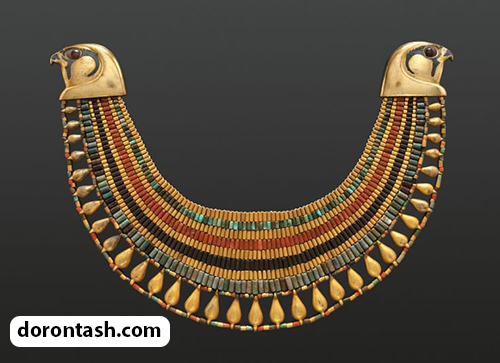


Carving is the most expensive and beautiful handicrafts of Iran
Inlaying is one of the original arts of Isfahan, which can be seen in other cities as well. In this art, carving is done on wood. The available documents show that the history of this art goes back to more than 1500 years ago.
One of the oldest existing inlaid works is a wooden door jamb with beautiful designs on it.
Inlaying, like inlaying, developed a lot in the Safavid period and became one of the first-class arts of Isfahan.
The main tool for inlaying as one of Iran’s handicrafts is mughar, which is used in a variety of different shapes.
Sarme embroidery and the most expensive and beautiful handicrafts of Iran
This industry dates back to the Parthian period, this type of art, which is considered to be one of the oldest types of textile art, has become the target audience of this art due to the history of Iran in handicraft industries in this field. The popularity of this art The art has progressed so much that during the Timurid period, the decorative curtains of the Kaaba were made using gold embroidery, which created very beautiful patterns and a unique effect in the Kaaba. Gold medals are usually made of precious metals. And they were made shiny like gold and silver, which in later ages to create a more general application among people, other alloy metals that existed at a lower price but with the same beauty, have been used in creating decorative patterns.
Jokkari art is very similar to Khatam in its working method, but one of its most important differences is that in Jokkari, like Khatam, it is not only used in facing, and sometimes it is also made as an independent object.
Jokkari is actually creating geometric patterns using several colors of wood that are placed together and a small cross-section is formed in the shape of a triangle, rectangle or rhombus. Jokkari basically means cutting and chopping wood.
As one of the most popular handicrafts in Iran, various raw materials such as orange, jujube, walnut and plantain trees are used in the art of jokkari. This art will be used to cover the edges of boxes, picture frames, decorate luxury furniture and many other things.

Seven-colored tiles and the most expensive and beautiful handicrafts of Iran
One of the most important handicrafts of Shiraz is the seven-color tile, which dates back to the era of Islamic architecture. In the Haft Rang Shiraz tile, first, white tiles are arranged next to each other, and then different patterns are designed and painted on them.
By painting and drawing on each tile, it is glazed again and then placed in the kiln to fix the colors.
Black, white, red, fawn, yellow, turquoise and azure colors are used in Shiraz seven-color tile. These tiles are mostly used for blessed places and their most important feature is the special composition of the glaze and the high quality of the tile.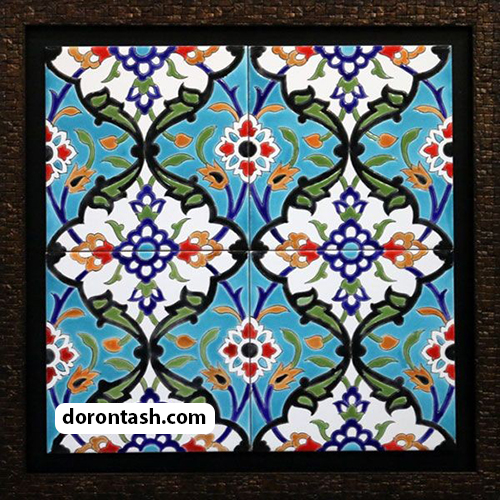
The most expensive and beautiful handicrafts of Iran
In essence, inlaying is the art of cutting wood and different materials into specific shapes and making flat pieces such as panels, shelves, tables, etc.
In this art, various raw materials are used to form a special design, including shells, types of wood, metals, bones, minerals, and other materials.
The history of Muraq art dates back to the Seljuk period and the 6th century of Hijri, and at first it was used on the surface of the table, door and buffet, but over time, the slime patterns that were formed with different woods increased and this art reached its peak.
In the art of mosaic work, the desired design is first drawn on a surface and then it is transformed into different parts.
Handicrafts of Tabriz
Tabriz is one of the most popular provinces in the country in the field of various handicrafts. One of the most important handicrafts of this province are hand-woven carpets, which are unique to Tabriz and are even exported abroad. In the following, we will review some of the most popular Iranian handicrafts in Tabriz.
- pottery (white clay)
- Needlework
- Embroidered shoes
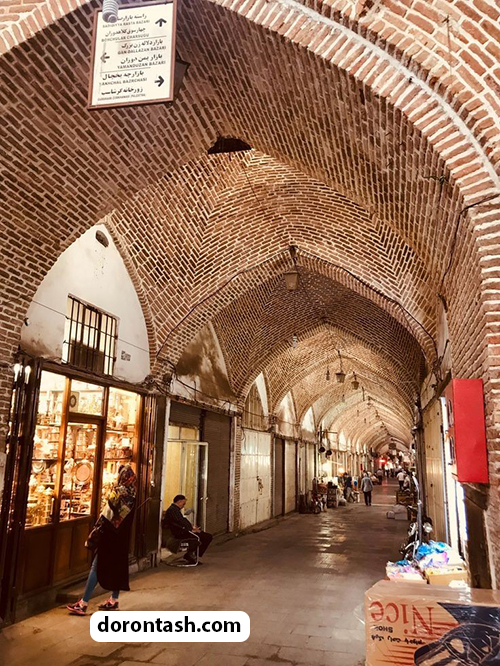
Handicrafts of Isfahan
All of us travel and think of buying handicrafts to take home as a souvenir of that city. Isfahan has one of the most diverse and popular handicrafts in Iran, which many of us remember when they are mentioned. In the following, we will talk about the most important handicrafts of Isfahan.
- Enamels
- Khatam Kari
- Woodcarving
- Etched
- Kobe turquoise
- Etching
Shiraz handicrafts
- Marquetry
- work joke
- Polychrome tiles
- glazier
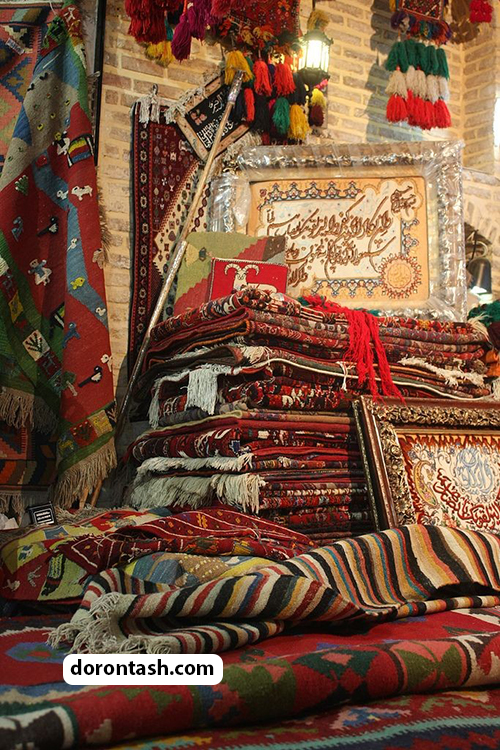
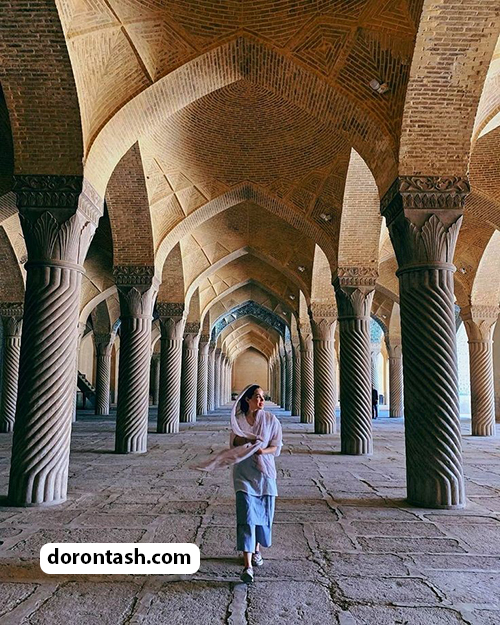
Handicrafts of Mashhad
- embroidered leather
- felt weaving
- purple weave
- Bafi’s poem
